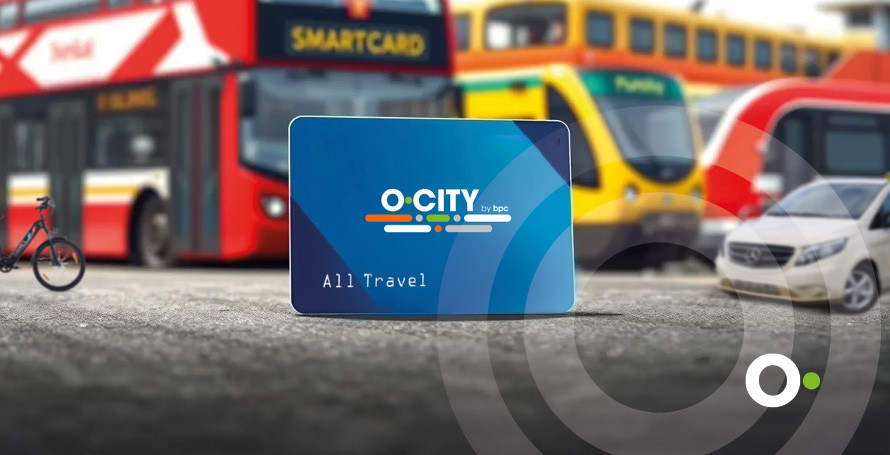Why rail operators should turn to automated fare collection in 2022
The transportation market contracted between 2020-2021 for obvious reasons and is only now starting to recover.
However, transportation companies now face new obstacles as a result of the pandemic, perhaps most notably demand for cleaner, safer, contactless transportation.
The rail transit sector - as one of the most widely used and convenient modes of cross-city travel - is having to face up to these growing challenges. While some continue to face the new normal with traditional approaches, others question the way to upscale their services and automate the fare collection to digital and modern standards.
In our previous blog we discussed the benefits digitalisation brings to commuters. In this article we explore five potential benefits of digitisation for rail operators.
Digitisation benefits

Before we look at potential digitisation benefits we need to briefly explain what we mean by automated fare collection or AFC. AFC is a technology that allows for digitisation and automation of fare computation and collection through various channels across the transportation business, typically static or mobile validators.
The owner platform is able to monitor their business from a central location while setting and controlling fares across their fleet, reducing the asymmetry of information between commuters and drivers and building transparency of communication and trust across the transit network. So what other advantages could the introduction of digital ticketing and fare collection bring?
1. Reduction of operational costs for ticketing
Means of payment have gradually evolved since the beginning of rail transportation. Starting with coins, tokens, paper tickets it has now reached e-ticketing and mobile ticketing as the most convenient ways for passengers to pay, as well as the most cost efficient way to do business for rail operators.
This cost efficiency is associated with the removal of the costs of embossing, coding and printing tickets at train stations, as well as maintaining and servicing the issuing machines. While these savings may seem not convincing, the costs associated with cash processing could be. The average salary for a cashier in the US is just under $25,000 based on data from salary.com, which the rail operator would save given the introduction of automated ticketing purchase and processing.
Real life example: Singapore LRT decided to completely remove standard paper tickets at its stations by March 2022 because of non-popularity and costs associated with these tickets.
2. Free-rider reduction
The second benefit of automated fare collection is the almost complete removal of non-paying customers. Free-riding problems occur mainly due to low accessibility of ticket purchasing options or inconvenient methods of payment.
Finding cash and queuing is time-consuming and extends journey time, which is not the case with open loop automated fare collection systems. Due to their open loop characteristics, rail operators can introduce any payment method (mobile phone, QR codes, plastic card, transport card, NFC device) which the consumer finds most convenient.
3. Transparency of transit for operators
While non-payment of fares can be caused by inconvenience, non-transparent payments and information create distrust among passengers. The convenience of the journey is important and deploying automated fare collection can help in this regard. The system allows for central monitoring and management of all fares from a web-based interface, improving transparency and subsidy allocation for social ruotes and segments. Digitisation of rail ticketing services makes it possible to observe the least and most loaded routes, which helps the operator to manage rail load and inform passengers through mobile apps of delays or alternative routes.
4. Seat management and optimisation
Not only fares and subsidies can be managed centrally. With digitisation of ticketing, the transport operator can offer additional services to its passengers, improving the convenience of its service. The introduction of a digital marketplace for purchasing e-tickets enables transport operators to introduce seat management and segmentation, which gives passengers additional levels of flexibility when booking their journey.
For the operator the functionality delivers even more benefits, such as seat optimisation (some of which might be locked to ensure social distancing) or cost optimisation based on ticket segment and tariff type, as well as collection of passenger preference data, which can be analysed and used for cross-selling additional products.
5. Widening the reach
As we mentioned in previous blogs, the benefits of account-based ticketing fare collection are numerous and do not end with the points above. With a proper open loop account based ticketing platform the rail operator can enhance its channels, extending commuter choice from ticketing machines to e-kiosks, online marketplaces, mobile and internet purchases with the possibility to pay with any fare media.
This greatly improves the enrollment of passengers to the system, as convenience, transparency and accessibility are the major factors commuters are now demanding.




